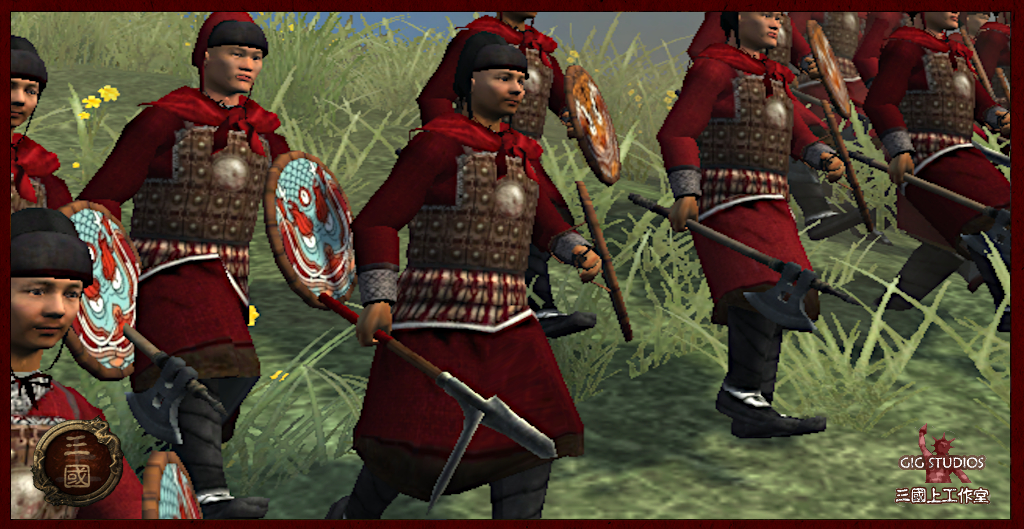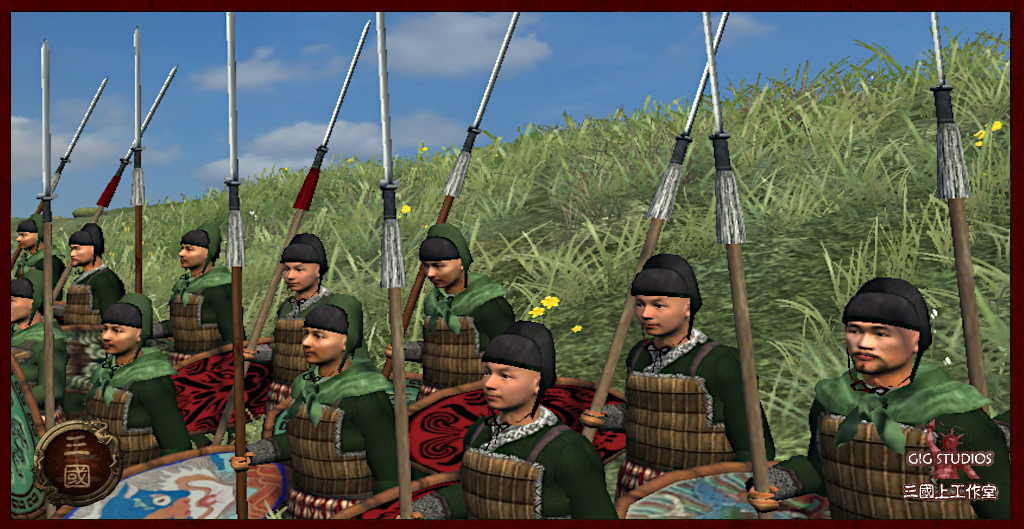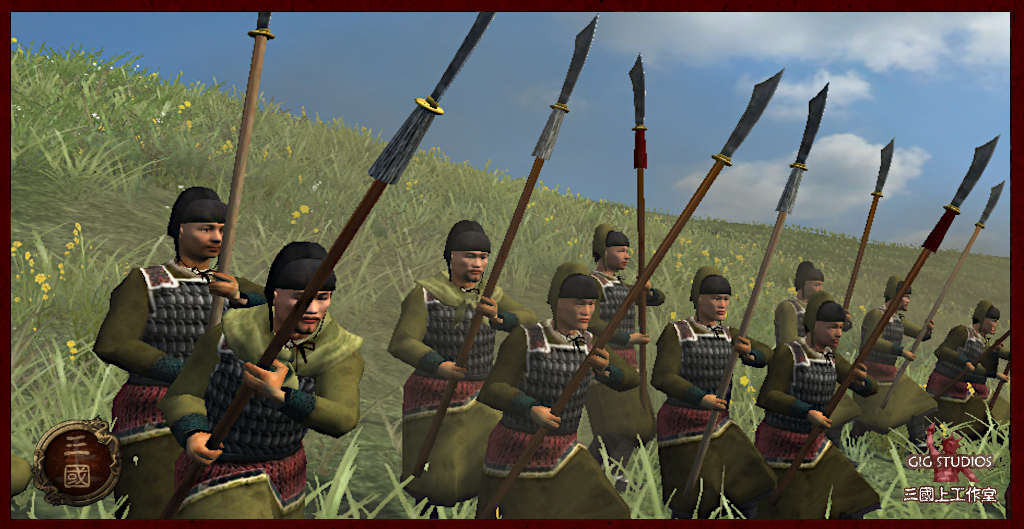Greeting once again, everyone.
As was stated a few times over the past several month, now that the mod has finished development, we are releasing a simple, all-in-one full installation of Rise of Three Kingdoms. So no more multiple downloads and installs to get the latest version. In addition to this, Gigantus and myself spent about a week not only cleaning up any last remaining bugs, but also removing all of the obsolete and unneeded content that had accumulated over the 10 years of the mod's development. So now the size of the mod is significantly leaner as well many files, scripts, and text entries having been tidied up. Not only that, but there were several new additions and fixes added to the mod for this final version. First, and most noticeable, is the addition of six new Han light infantry units. These six units are Axe (yue and shouji), Spear (mao), Glaive (pudao), Sword-Staff (sha), Great-Sword (dadao), and Great-Axe (fu) Infantry. The reason for their introduction is three-fold: first, I felt as though there needed to be a bit more unit variation, particularly at the light unit level. Second, I wanted to represent some different types of weapons that were used in the Jian'an and early Three Kingdoms period, but later fell out of usage. And, third, I also wanted to show a, over time, a clear progression to more focused army compositions, arms, and armaments amongst standing Three Kingdoms armies. Each region will have access to two of the new units, with each unit also only being available in two regions. For example, the Zhongyuan region will have the Axe and Spear units, the Jiangdong region the Axe and Great-Sword units, and the Ba-Shu region the Sword-staff and Glaive units. Below you can see images of the new Axe, Sword-Staff, and Glaive Infantry units, along with an explanation of the new weaponry that they wield.

A military axe, the 'yue' was a common weapon in ancient times, but it fell out of use in favor of more refined weapons. By the Three Kingdoms period, it was more associated with tribal warriors. However, it still had its obvious uses as a tool and was, at times, utilized on the battlefield. Ceremonial jade yue were part of court regalia and often issued as a symbol of supreme military authority. The 'shouji', or hand-halberd, was the curved blade and spear of the 'ji', but attached to a short, hand-held section as opposed to something the length of a polearm. While not commonly used, it was a versatile weapon in close quarters. Cao Pi was proficient in the use of the shouji, and paired shouji were Dian Wei’s favored weapons.

The 'sha', or sword-staff, was a long sword-like blade attached to the end of a long pole, with small metal pegs at the base of the blade serving as handguards. The 'sha' was one of the five main weapons of the Han Dynasty military. It was a powerful polearm with formidable thrusting power, as well as lethal cutting ability. The handguard not only protected the users hand, but could also be used to bind to the opponent's weapon. As a lengthy weapon, and due to it's construction, it was effective against infantry as well as cavalry.

The feasome 'pudao', or glaive, was a weapon that was effective in fighting against those on foot and horseback. The pudao was a large variant of the dao, with the pudao having a handle that was at least twice as long as the blade. The design was intended to let the wielder strike an enemy from a distance and it was also effective for fighting men on horseback. The 'yanyuedao' of the Song dynasty - sometimes called the 'guandao', because Guan Yu wields one in the Sanguo Yanyi - was essentially identical to the pudao, though slightly longer and heavier.
In addition to the inclusion of the new Han light units, there were also many other changes and fixes to this final version. For example, in the Liu Bei missions, once you have completed the mission to defeat the Nanman, Meng Huo will join your faction; a new event, which shows up around turn 4, gives an explanation on the Unaligned Forces and their role in the mod; Gukcheon, Gye-su, and Balgi are now rebel generals in the three eastern Korean settlements in the 190 campaign; the Chaisang/Yuzhang/Poyang mutual commandery borders and the Jiuzhen/Cangwu/Yulin/Hepu mutual commandery borders were all adjusted; and bonuses for the Military Strategist, Huoyi, and Water Element shrines were all updated. There are many more fixes and improvement, all of which can be found in the mod's changelog.
As this full install removes quit a bit of unused and obsolete content that has accumulated over the years, you will need to delete any previous installation of the mod - to do so, navigate to your Medieval II Total War\mods\ directory and delete the rotk folder. The Version 6.0 Full Release can be downloaded here and has thorough instructions on how to properly install this all-in-one, definitive iteration of the mod. Please read the installation instructions carefully as, even though this installation process is super simple, you can mess it up if you fail at due diligence.
Happy gaming!



amazing job! congrats for arriving to the final version and thank you so much for all the hard work these years!
There is no evidence that there were pudao in use during the Three Kingdoms period. There have been some images that have gotten passed around the internet claiming that they are Han dynasty carvings which seem to show something "like" a pudao, however I have sent these images to Professor Shao-yun Yang of Denison university, and his opinion is "I strongly suspect they are forgeries. Some of the stylistic details look too modern."
This comment is currently awaiting admin approval, join now to view.